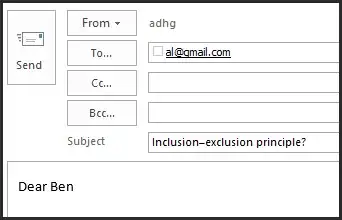Say I have to write 5 emails to 5 people: Al, Ben, Charlie, Dan, Eli. Each email starts with the person's name (i.e., "Dear Al").
Mistakenly, as it was late at night, I wrote the To section to the wrong person (example below).
Question: what is the probability that all emails will reach to the wrong person?
Is this type of questions relates to the Inclusion–exclusion principle? If so, how would you solve it?
